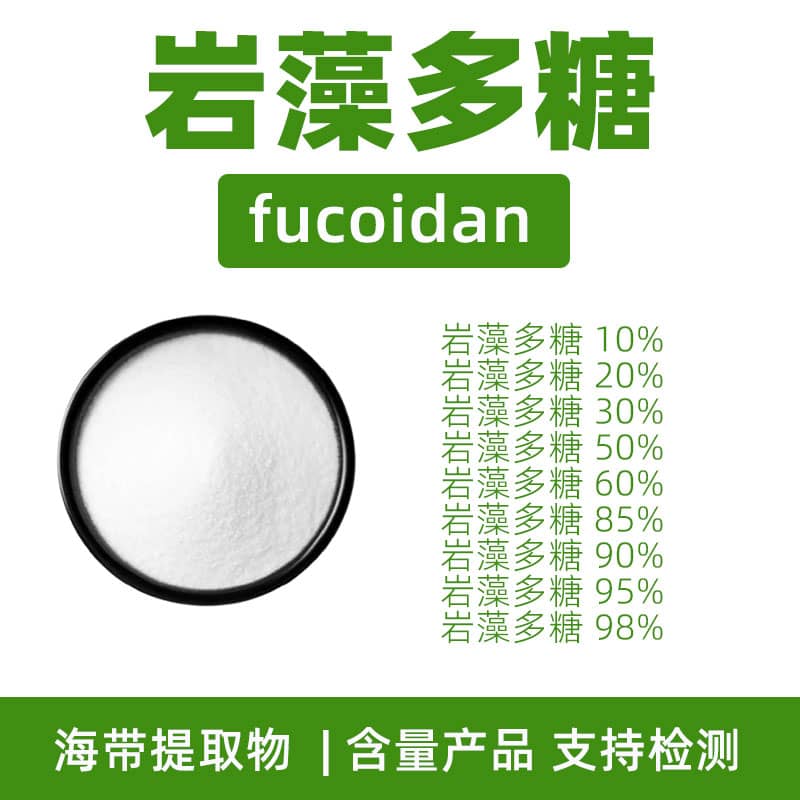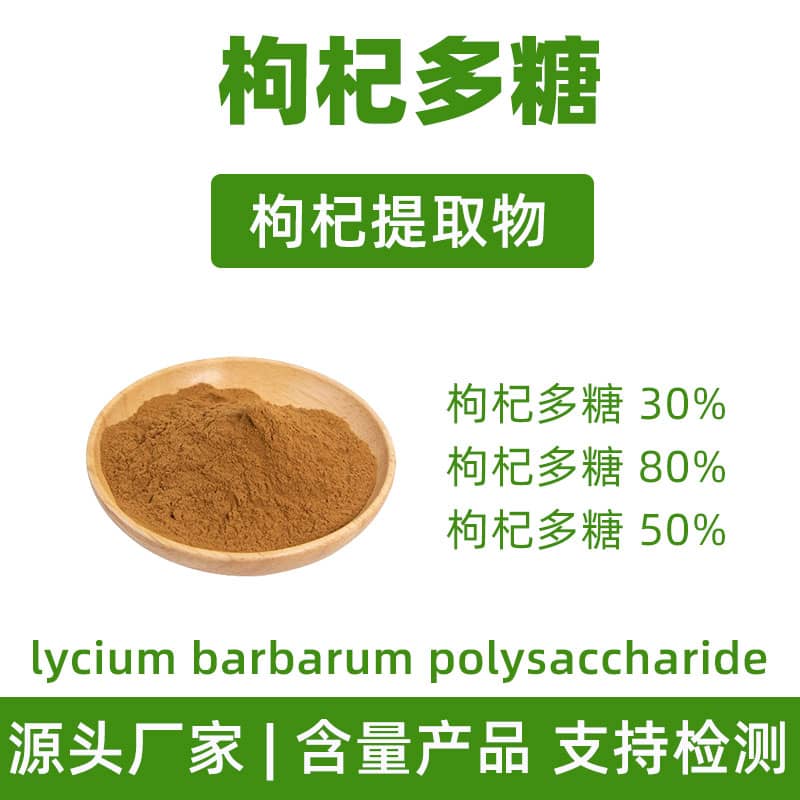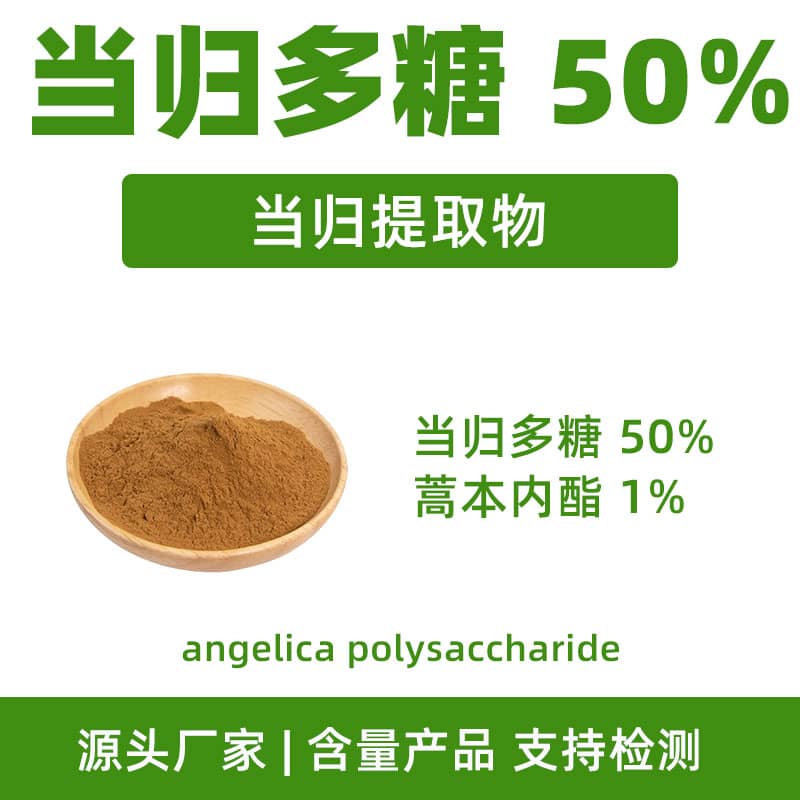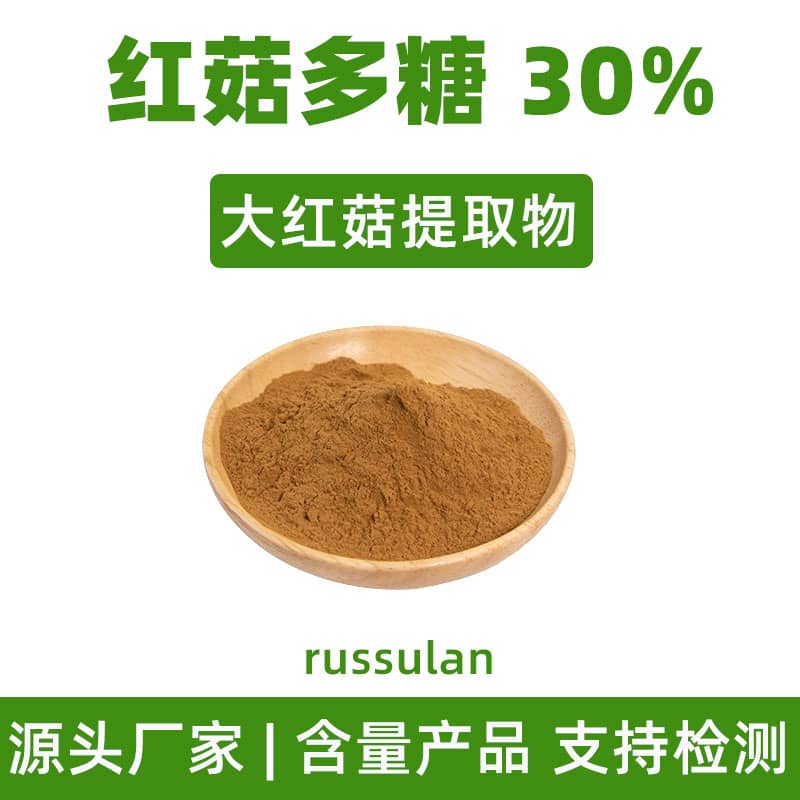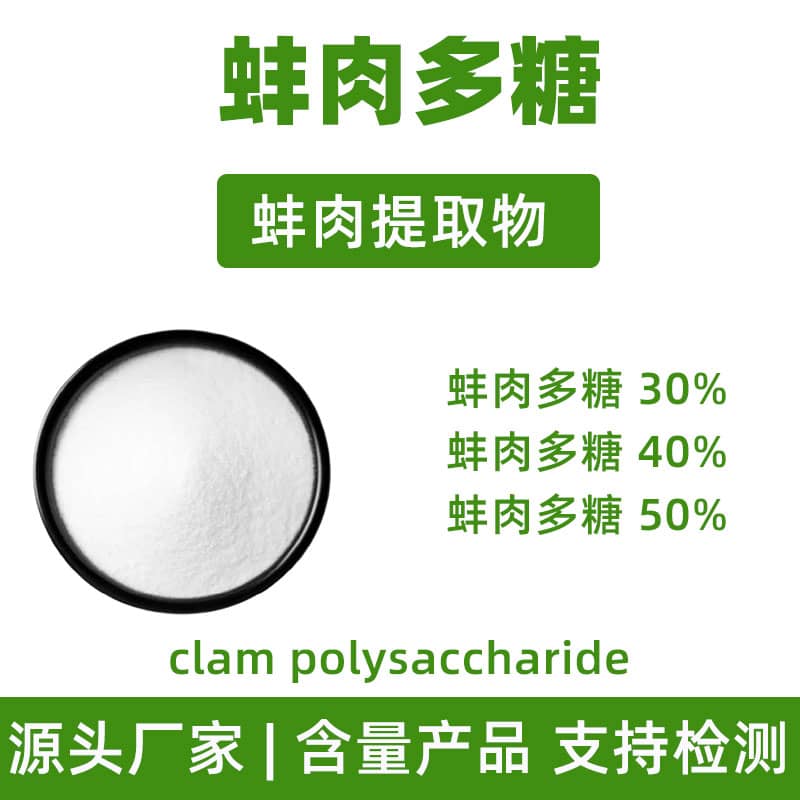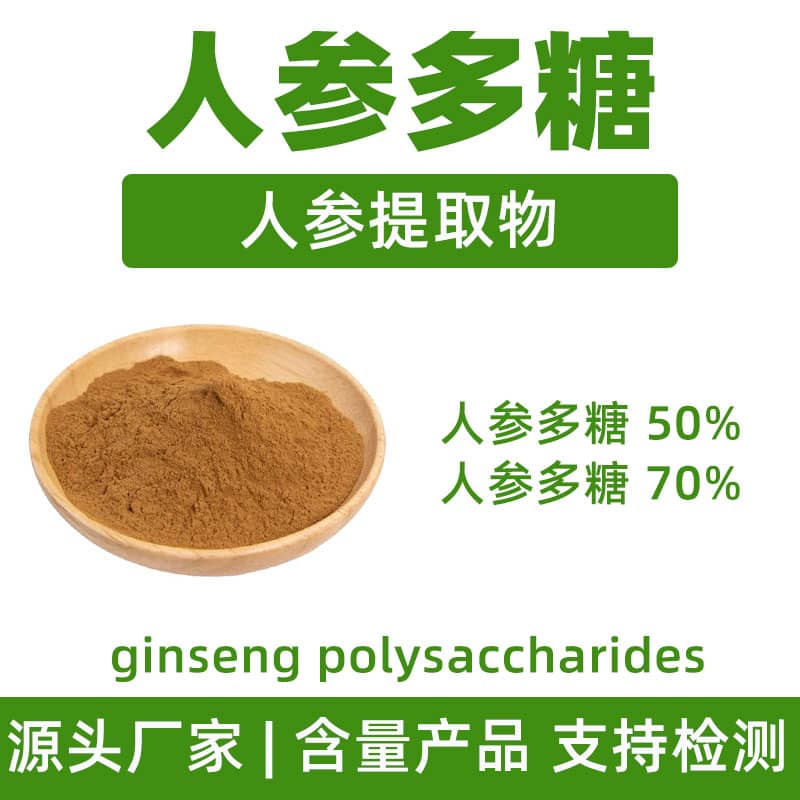Jujube Polysaccharide Product Introduction
Jujube polysaccharide is a natural polysaccharide extracted from jujube (Ziziphus jujuba), with a content of 50%. It is mainly extracted from the pulp of jujube and obtained through specific processing. Its main components include polysaccharides such as arabinose, mannose, and glucose.
Main Ingredients
Jujube polysaccharide is mainly composed of various monosaccharides and low molecular weight sugars, including arabinose, mannose, glucose, etc. These polysaccharide components are finely treated during the extraction process to maintain their original biological activity.
Benefits
- Immune Support: Jujube polysaccharide has certain immune regulatory effects and can enhance the body's natural defense capabilities.
- Antioxidant: Its rich polysaccharide components have antioxidant properties, which help neutralize free radicals and protect cells from oxidative damage.
- Nutritional Supplement: As a nutritional component, jujube polysaccharide helps supplement the nutritional needs of daily diet.
Applications
- Food Industry: As a functional food additive, it improves the nutritional content of food and enhances its health value.
- Health Supplements: Used in the production of health supplements, such as nutritional supplements, to help improve overall health.
- Cosmetics: Used as a moisturizing and skin care ingredient in cosmetics, improving skin texture and increasing skin moisture retention.
Jujube polysaccharide is a safe, natural product widely used in the fields of food, health supplements, and cosmetics, providing rich nutrition and health value to products.
Jujube Polysaccharide Product Production Process
The production process of jujube polysaccharide includes the following main steps:
1. Raw Material Preparation
The production of jujube polysaccharide starts with the preparation of jujube raw materials. Choose mature, healthy jujubes, remove the pits, and clean them to remove impurities.
2. Extraction
Crush the processed jujube pulp to obtain a uniform pulp. Use hot water extraction method, add the crushed jujube pulp to hot water, usually at a temperature of 60°C to 90°C for extraction. The extraction process may need to be carried out multiple times to ensure the full release of polysaccharide components. The extraction liquid is filtered to remove solid impurities and obtain a clear liquid containing jujube polysaccharide.
3. Concentration
Concentrate the filtered extraction liquid. Common concentration methods include vacuum concentration or reverse osmosis, to reduce the volume of liquid and increase the concentration of polysaccharides. The temperature should be controlled during the concentration process to avoid thermal degradation of polysaccharide components.
4. Refining
The concentrated liquid is further refined to remove non-polysaccharide components. Refining methods include ion exchange, silica gel column chromatography, etc., aiming to improve the purity and quality of jujube polysaccharide.
5. Drying
The refined polysaccharide liquid is converted into powdered jujube polysaccharide through spray drying or freeze-drying methods. During spray drying, the liquid is sprayed into hot air to evaporate quickly; freeze-drying removes moisture through sublimation at low temperatures.
6. Crushing and Screening
The dried polysaccharide powder needs to be crushed and screened to ensure uniform particle size and meet specification requirements. Crushing and screening processes can use fine grinding machines and screen equipment.
7. Packaging and Storage
The final jujube polysaccharide powder is packaged, usually in sealed bags or aluminum foil bags to prevent moisture and oxidation. The storage environment should be kept cool and dry, away from direct sunlight and high temperatures, to maintain the stability and effectiveness of the product.
Every step in the entire production process needs to be strictly controlled to ensure the high quality and purity of jujube polysaccharide.
Jujube Polysaccharide Efficacy, Functions, and Side Effects
Jujube polysaccharide is a natural polysaccharide extracted from jujube (Ziziphus jujuba), with various potential health benefits. Below are its main effects, functions, and possible side effects:
Efficacy and Functions
- Immune System Support
Jujube polysaccharide is rich in polysaccharide components with immune regulatory effects, helping to enhance the body's natural immunity. Studies have shown that polysaccharides can promote the activity of immune cells, improve the body's defense capabilities against external pathogens, and thus help maintain healthy immune system function.
- Antioxidant
The polysaccharide substances in jujube polysaccharide have antioxidant properties, which can neutralize free radicals in the body, reduce oxidative stress damage to cells. The antioxidant effect helps slow down the aging process, protect cells from oxidative damage, and support overall health.
- Improving Digestive Health
Jujube polysaccharide has a certain prebiotic effect, which can promote the growth of beneficial flora in the intestines and improve the balance of intestinal microecology. By promoting intestinal health, it helps the digestive system maintain normal function and improves constipation and other digestive problems.
- Enhancing Physical Strength and Endurance
As a natural nutritional component, jujube polysaccharide helps improve physical strength and endurance. Polysaccharide components can help maintain energy levels and support the body's performance in exercise and daily activities.
- Regulating Blood Sugar Levels
The research on the blood sugar level regulating effect of jujube polysaccharide is also conducted. It can help improve blood sugar metabolism, assist in controlling blood sugar levels, and may be helpful for diabetics.
Side Effects
- Allergic Reactions
Although jujube polysaccharide is generally considered safe, some individuals may have allergic reactions to jujube or its extracts. Common allergic reactions include skin redness, itching, or gastrointestinal discomfort. If allergic symptoms occur, stop using immediately and consult a professional doctor.
- Gastrointestinal Discomfort
In some cases, jujube polysaccharide may cause mild gastrointestinal discomfort, such as bloating, diarrhea, or constipation. These symptoms are usually caused by excessive intake or individual differences in digesting polysaccharide components.
- Interactions
Jujube polysaccharide may interact with certain drugs or other health supplements. Especially when using anticoagulant drugs or other drugs that affect blood sugar, you should consult a doctor to avoid potential drug interactions.
In general, jujube polysaccharide, as a natural polysaccharide, has significant immune regulation, antioxidant, digestive improvement, and physical strength enhancement effects. However, during use, you still need to pay attention to possible allergic reactions and gastrointestinal discomfort and other side effects, and use it according to your personal health condition.
Jujube Polysaccharide Application Scenarios and Usage
Jujube polysaccharide, as a natural polysaccharide with rich nutrition and health characteristics, is widely used in the fields of medicine, food, and cosmetics. Below are the main application scenarios, usage, and dosage introductions of this product in these fields:
Medical Field
In the medical field, jujube polysaccharide is often used to prepare health supplements and nutritional supplements. Its main applications include:
- Health Supplements
The application of jujube polysaccharide in health supplements mainly utilizes its immune regulation, antioxidant, and physical strength enhancement effects. The common usage is as an active ingredient in health supplements, helping to improve the overall health level of the body. The recommended dosage is usually 300-500 mg per day, and the specific dosage should be determined according to the product instructions or doctor's advice. It is recommended to take it in divided doses to improve absorption.
- Nutritional Supplements
As a nutritional supplement, jujube polysaccharide can be used to improve physical strength, increase energy, and support digestive health. The content of jujube polysaccharide in such products is usually 30%-50%. The recommended dosage is usually 1-2 grams per day, and the specific dosage should be adjusted according to the product specifications and personal health condition.
Food Field
In the food field, jujube polysaccharide is used as a functional food additive, with the following applications:
- Functional Foods
As an additive of functional foods, jujube polysaccharide can improve the nutritional value of food and enhance its health benefits. The application range includes beverages, energy bars, nutritional fortified foods, etc. Generally, the addition amount in food is 0.5%-2%, and the specific dosage depends on the type and formula of the food.
- Nutrition-Enhanced Foods
When used to produce nutrition-enhanced foods, the addition amount of jujube polysaccharide is usually 1-5 grams per serving to ensure that its functional components can effectively provide expected health benefits. Adding jujube polysaccharide to the formula can improve the taste, nutritional components, and health effects of the food.
Cosmetic Field
In the cosmetic field, jujube polysaccharide is used in skincare products, and its main function is moisturizing and improving skin texture:
- Skincare Products
The application of jujube polysaccharide in skincare products mainly utilizes its good moisturizing and soothing properties. It can be used as an ingredient in face creams, face masks, lotions, and other skincare products to help maintain skin moisture balance. The recommended dosage is usually 0.5%-2% (based on the total amount of the product), and the specific concentration is adjusted according to the product formula and usage effect.
- Beauty Products
In beauty products, such as cleansers and toners, jujube polysaccharide can improve the smoothness and softness of the skin and enhance the overall appearance of the skin. The general usage concentration is between 0.5%-1%, which can effectively play its moisturizing and antioxidant effects.
Usage and Dosage
- Medical Field: Usually 300-500 mg per day, take in divided doses according to the product instructions or doctor's advice.
- Food Field: The addition amount in food is 0.5%-2%, and the specific dosage depends on the type and formula of the food.
- Cosmetic Field: The usage concentration in skincare products is 0.5%-2%, and the specific concentration is adjusted according to the product type and formula effect.
The application of jujube polysaccharide needs to be adjusted according to the needs of specific products and the regulations of the target market to ensure the effect and safety of the product. In any application scenario, it is recommended to follow the manufacturer's usage instructions and recommended dosage to ensure the best effect.
Jujube Polysaccharide Source Plant Introduction, Distribution, and Growth Environment
Jujube polysaccharide comes from jujube (Ziziphus jujuba), which is widely distributed in many regions, and here is the detailed introduction to the source plant of jujube, including its distribution and growth environment:
Source Plant Introduction
Jujube (Ziziphus jujuba), also known as jujube tree, is a common deciduous small tree or shrub, belonging to the Rhamnaceae family. The jujube tree is native to China and has a cultivation history of several thousand years. It is famous for its rich nutritional value and medicinal value, and its fruit is widely used in food, health products, and traditional Chinese medicine. Jujube fruit contains rich vitamins, minerals, and polysaccharide components, among which jujube polysaccharide is one of the important active components.
Distribution
The jujube tree is native to China, but over time, it has been introduced to warm climate regions around the world. In China, jujubes are mainly distributed in North China, East China, Central China, South China, and Northwest China. Due to its strong adaptability, jujubes can grow in different soil types and climate conditions.
Besides China, jujubes are also widely distributed in Central Asia, South Asia, Southeast Asia, and the Mediterranean coastal regions. In these areas, jujubes are cultivated for food, medicine, and economic crops. For example, countries such as Iran, Turkey, Egypt, and India also have large-scale planting. The drought resistance of jujubes allows them to grow in arid or semi-arid environments, which are suitable for their growth.
Growth Environment
Climate
The jujube tree is suitable for growing in warm, dry, or semi-dry climatic conditions. It can withstand high and low temperatures, but it is difficult to grow in extremely cold environments. The jujube tree generally grows best in areas with an average annual temperature of 10°C-20°C. In the cold regions of northern China, jujubes are usually planted in protected environments to prevent damage to the plants by low winter temperatures.
Soil
Jujubes have relatively loose soil requirements and are suitable for growing in well-drained, loose soil. They can grow in different soil types, including sandy soil, loam, and light clay. However, to achieve the best growth effect, the soil pH value should be maintained between 6.0 and 8.0, as jujubes have poor adaptability to acidic soil. In poorly drained soil, the roots of the plant are prone to damage, leading to poor growth.
Moisture
The drought resistance of the jujube tree is strong, but regular watering is still needed to maintain growth. In the dry season, proper irrigation helps maintain plant health and improve fruit yield. The roots of the jujube tree can penetrate deep into the soil and obtain moisture from the soil, thereby surviving in arid conditions.
Light
The jujube tree likes plenty of sunlight, and a sunny environment is conducive to the plant's photosynthesis, thereby improving the nutritional components of the fruit. Jujube trees should be planted in sunny places and receive at least 6 hours of sunlight per day. Shadows or overly shaded environments will affect the growth of plants and the quality of fruit.
Summary
Jujube polysaccharide comes from jujube (Ziziphus jujuba), which is widely distributed in China and other warm climate regions. The jujube tree has strong adaptability and can grow in various soils and climate conditions, but warm, dry climatic conditions and well-drained soil are most ideal. Globally, the planting and application of jujubes continue to expand, and its polysaccharide components have important application value in health products and medicine.
Jujube Polysaccharide Processing and Storage
The processing and storage of jujube polysaccharide are crucial to maintaining its quality and efficacy. Below are the related processing and storage methods:
Processing
- Raw Material Selection and Pretreatment
Choose mature, healthy jujubes as raw materials and clean them to remove mud and impurities. Then, dry the jujubes to facilitate subsequent crushing and extraction. Drying can be done using natural air drying or mechanical drying methods to ensure that the internal moisture of the jujubes is reduced to an appropriate level.
- Crushing and Extraction
Dry jujubes need to be crushed to obtain fine powder. Mix the jujube powder with an appropriate amount of solvent (such as water or ethanol) for extraction. The extraction process usually includes soaking, heating, and filtering steps. Adjust the extraction conditions (such as temperature, time, and solvent concentration) to optimize the extraction efficiency of jujube polysaccharide.
- Concentration and Drying
The liquid containing the extracted jujube polysaccharide solution needs to be concentrated to remove excess solvent. Concentration can be carried out by evaporation or other methods. After concentration, the liquid is dried into a powder, and the final product of 50% jujube polysaccharide is obtained. Drying methods usually include spray drying or freeze-drying.
- Screening and Packaging
The dried powder needs to be screened to remove undissolved residues to ensure the purity and uniformity of the final product. When packaging, use sealed containers to prevent moisture and air from affecting product quality. Packaging materials should have good moisture resistance and oxidation resistance.
Storage
- Environmental Conditions
Jujube polysaccharide should be stored in a cool, dry environment, away from direct sunlight. The ideal storage temperature is 15°C-25°C, and the humidity should be controlled between 30%-50%. High temperature and humidity can cause jujube polysaccharide to absorb moisture, clump, or degrade.
- Sealed Storage
The product should be stored in a well-sealed container, such as an aluminum foil bag or plastic container. Make sure there is no air and moisture in the container to prevent the deterioration of jujube polysaccharide. Using sealant can further enhance the moisture resistance of the container.
- Shelf Life
According to the recommended storage conditions, the shelf life of jujube polysaccharide is usually 2-3 years. During this period, regularly check the product quality to ensure there is no moisture, discoloration, or odor. If any abnormalities are found, stop using it immediately and take appropriate measures to deal with it.
Correct processing and storage methods can effectively maintain the quality and efficacy of jujube polysaccharide and ensure that it plays the best effect during use.
Monica Sun is a seasoned expert in the plant extraction industry with over a decade of experience in research and production. She specializes in the extraction and purification of plant active ingredients, focusing on driving innovation in natural product applications. Monica has participated in the development of multiple functional plant extracts, delivering high-value natural raw material solutions for the health food, pharmaceutical, and dietary supplement sectors.









